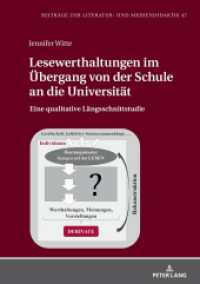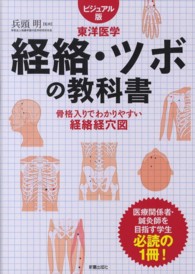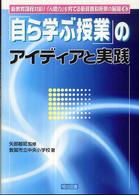Full Description
This volume explores the multiple aspects of cyclical syntactic change from a wide range of empirical perspectives. The notion of 'linguistic cycle' has long been recognized as being relevant to the description of many processes of language change. In grammaticalization, a given linguistic form loses its lexical meaning - and sometimes some of its phonological content - and then gradually weakens until it ultimately vanishes. This change becomes cyclical when the grammaticalized form is replaced by an innovative item, which can then develop along exactly the same pathway. But cyclical changes have also been observed in language change outside of grammaticalization proper.
The chapters in this book reflect the growing interest in the phenomenon of grammaticalization and cyclicity in generative syntax, with topics including the diachrony of negation, the syntax of determiners and pronominal clitics, the internal structure of wh-words and logical operators, cyclical changes in argument structure, and the relationship between morphology and syntax. The contributions draw on data from multiple language families, such as Indo-European, Semitic, Japonic, and Athabascan.
The volume combines empirical descriptions of novel comparative data with detailed theoretical analysis, and will appeal to historical linguists working in formal and usage-based frameworks, as well as to typologists and scholars interested in language variation and change more broadly.
Contents
1: Anne Breitbarth, Lieven Danckaert, Elisabeth Witzenhausen, and Miriam Bouzouita: Cycling through diachrony
2: Elly van Gelderen: Cyclical change and problems of projection
3: Eric Fuß: When morphological and syntactic change are not in sync: Reassessing diachronic implications of the Rich Agreement Hypothesis
4: Susann Fischer, Mario Navarro, and Jorge Vega Vilanova: The clitic doubling parameter: Development and distribution of a cyclic change
5: Jacopo Garzonio and Silvia Rossi: Weak elements in cycles: A case study on dative pronouns in Old Italo-Romance
6: Judy Bernstein, Francisco Ordóñez, and Francesc Roca: On the emergence of personal articles in the history of Catalan
7: Kari Kinn: Bare singular nouns in Middle Norwegian
8: Andreas Blümel and Marco Coniglio: What kind of constructions yield what kind of constructions?
9: Moreno Mitrovic: Quantificational cycles and shifts
10: Cecilia Poletto and Emanuela Sanfelici: On the relative cycle: The case of P+che relative clauses from Old to Modern Italian
11: Karen De Clercq: French negation, the Superset Principle, and Feature Conservation
12: Elitzur A. Bar-Asher Siegal and Karen De Clercq: From negative cleft to external negator
13: Montserrat Batllori, Elisabeth Gibert-Sotelo, and Isabel Pujol: Changes in the argument and event structure of psych verbs in the history of Spanish
References
Index








